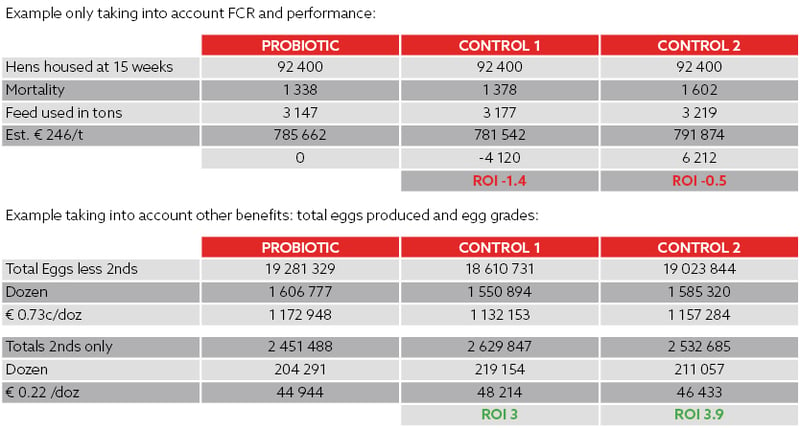You might think that switching to a preventive approach incurs additional work or labor. It is true that adoption comes with some costs: extra labor input, extra materials and the effect on farm operations. However, the additional cost of this adoption doesn’t weigh against the future benefits: lower veterinary and medication costs, improved yield, increased homogeneity and improved product quality. With these preventive measures, no additional time or work is needed to take care of the animal. On top of this, we see that prevention of diseases is crucial for your profitability as diseases cost a lot of money to farmers and producers.
The economic impact of diseases scan be categorized in four areas:
- Revenues and production foregone
- Extra production costs
- Saved production costs
- Additional revenues
When we choose not to prevent diseases on-farm, we will lose money treating sick animals and waste resources, but also lose money due to opportunity costs. We hereby show you two practical examples.
A healthy pig of 105 kg in the slaughterhouse costs you €120 to produce. You expect to sell at €140, so you will gain €20. If you have a sick pig which dies at slaughter age, you will lose the following revenues:
The production cost of €120
The loss of the revenue which you were to receive at the sale, €140. It is a missed opportunity, so we refer to it as an opportunity cost and see it as the biggest loss
If you let the pig die, you will lose €120 (=cost already sunk into its production)
If you spend another €139 and save the pig so that it can be sold, your total cost of production is now €259.
The loss in this case is €140 (revenue) – €259 (total cost) = -€119.
Question: If you let the pig die, your loss is -€120, the cost incurred before death. Which option offers the most profit (least loss)?
An ROI example of implementing a preventive solution in layer production, if you keep the correct parameters in mind, preventive measures are cost/effective! The preventive solution that was used is a feed additive: probiotic (Bacillus Spp. PB6)
Golden rule: do not focus on FCR and performance only to calculate ROI, there are also other criteria that contribute to your profit!
Keep in mind what “extra” benefit the product brings for your farm:
Conclusion: if you keep the correct parameters in mind, preventive measures are cost/effective!

When we choose not to prevent diseases, we not only face the extra costs for treating sick animals and the wasted resources, but also other opportunity costs. We agree that prevention of diseases also includes a cost and labor time, however, these costs and time will never outweigh your lost opportunity costs and wasted resources. At Kemin, disease prevention is our core business. Contact us now to start a partnership!
© Kemin Industries, Inc. and its group of companies 2025 all rights reserved. ® ™ Trademarks of Kemin Industries, Inc., USA
Certain statements may not be applicable in all geographical regions. Product labeling and associated claims may differ based upon government requirements.